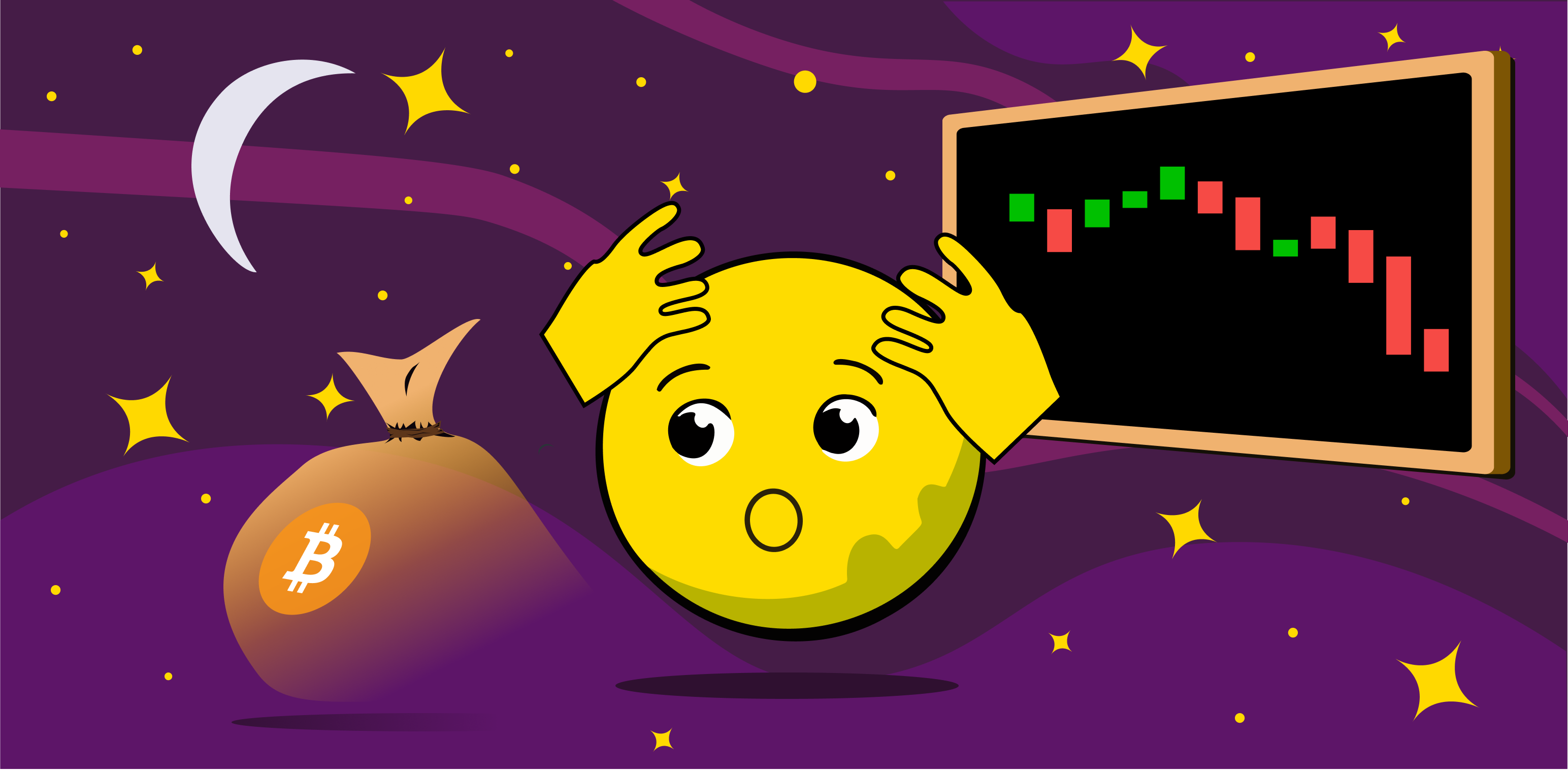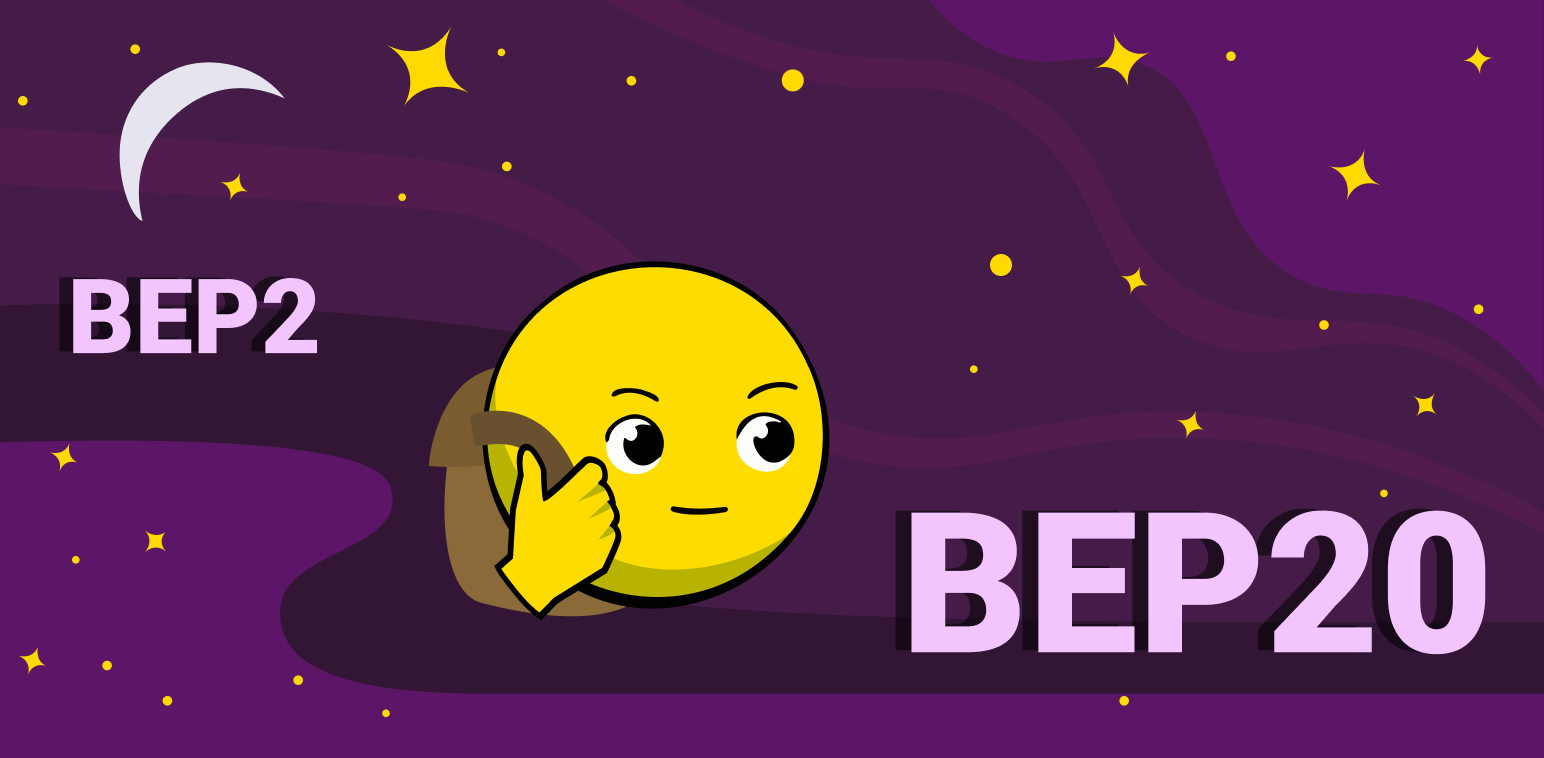
Don't buy high, don't succumb to FOMO and FUD, don't invest all the money in one asset, and don't invest more of what you're willing to lose. These are just a few basic principles of investing in cryptocurrencies, which everyone seems to need to know about. However, with the growing popularity of cryptocurrencies, newcomers come to the market who regularly violate these commandments. In fact, it's not just newcomers who make the mistakes that this article describes - even investors with experience sometimes fall into the same trap. Of course, they learn from mistakes, but in the crypto market the price of such errors may be too high, and therefore it is better to avoid them simply. We made a selection of the most common mistakes in crypto investing.
Lack of Research and Due Diligence
Many newcomers simply do not know what on-chain analysis is. A lack of understanding of how things work, let alone how to put them into practice, contributes to making one mistake after another. Without owning such information, the novice crypto investor, in fact, throws himself into a lose-lose situation. Not knowing how to analyze the market, you deprive yourself of the chance of success because trading and investments are always about a competent assessment of probabilities, where there are no 100% positive or negative expectations.
Before you start doing anything in the crypto field (trading, mining, investing in a long-term project), first and foremost learn the basic terms and mechanisms:
- what are cryptocurrencies and blockchain;
- what is Bitcoin and Satoshi, how does it work;
- how crypto exchanges work;
- what are the crypto wallets and how to deposit money in the crypto;
- on which wallets to store etc.
The SwapSpace Academy regularly publishes educational materials, covering these and many other aspects of the crypto market. Besides, the SwapSpace Blog will be handy in enhancing your crypto skills.
Do not ignore new knowledge, even top gurus of cryptocurrencies always learn something new, and study new coins and technologies - in fact, they live in this area. If you have received a certain amount of knowledge and closed yourself into your world with it, trying to earn money, you will not succeed. Keep educating yourself, be categorical and self-critical. It's vital!
Emotional Trading: Chasing Hype and FOMO
Making investment decisions based on emotion and hype rather than a chosen strategy is one of the best ways to lose money. There are two opposite extremes:
FOMO - fear of missing out on profits.
When an asset is growing rapidly, there is a great temptation to invest in it too. If you have time on time, at the beginning of the trend, and get out on time, then you can make great money. But newcomers most often decide to buy only when the asset has already been overbought and the upward movement is about to be replaced by a downward one.
FUD - fear, uncertainty, and doubt in the asset, leading to the desire to get rid of it at any cost, even at a loss.
When an asset falls too quickly or does not grow for a long time, it is very difficult to hold on so as not to sell it. But if this is a reliable project and over time fundamentally it has not become weaker, then, most likely, the value of its coin will rise.
Another mistake is investing in crypto based on the hype around the project or positive information links. In this case, it is easy to buy an overvalued token or become a member of the pump-and-dump scheme.
Growth based on hype and FOMO always gives way to a rapid drop. Try to gather more expert opinions about the project, and conduct your own analysis before making a decision.
Ignoring Risk Management
Newcomers are very often not ready to put up with the loss received, which is why they commit a variety of nonsense. By holding the position until the last cent in the hope of a price reversal, or even doubling the volume of the transaction, you risk going into the red. Therefore, you need to set the stop-loss or stop-limit at a level where the price will no longer unfold.
A stop-loss order will automatically sell your assets if their value falls below the indicated value.
A stop-limit order guarantees you the purchase of tokens no higher than a certain price.
These loss and profit fixing levels must be provided by the rules of the selected trading strategy. You should always stick to set levels and not change them during trading.
At the same time, you should not close a loss-making transaction immediately upon entering the negative. Often the price of cryptocurrencies rolls back before the trend movement.
Be sure to use the tools mentioned to protect yourself from market volatility, book profit, and reduce losses.
Neglecting Security
If you do not follow the basic security principles, you can easily lose all your digital assets.
It is important to understand that while you own a private key from your crypto wallet, you have complete control over your cryptocurrencies. No one can confiscate them, but at the same time, all responsibility for their safety lies only with you. Losing your private keys, mnemonic phrase, or wallet password, making a mistake with the recipient's address or the amount of the transfer, may cause the loss of your funds.
The most common security errors by crypto investors are:
- Sending coins to the wrong address. All transactions in the blockchain are irreversible - they cannot be canceled or rewritten retroactively. Sometimes this is possible, but you will need the consent of most network users, and you will need to hold a hard fork - an offshoot of the network, within which a new chain of blocks will be launched. But because of your mistake, the project developers are unlikely to go for it.
- Sending coins in the wrong network. Most Exchanges do not have access to the funds sent in the wrong blockchain network, so this mistake can result in the loss of funds, as once the coins are sent to the wrong network, they can be extremely difficult or even impossible to recover. Additionally, the transaction fees associated with sending coins on the wrong network can also contribute to financial losses for the investor. To avoid this mistake, it is important for crypto investors to carefully double-check the recipient's address and network compatibility before initiating any transactions. It is also crucial to stay informed about any network updates or changes that could affect the compatibility of transactions.
- Loss of private key or mnemonic phrase (also known as seed phrase). If you lose them, nothing can be restored. A private key gives access to a specific address, and a seed phrase gives access to a wallet (it is needed to restore access to the wallet if the password is lost or enters the wallet from another device). Therefore, it is so important to keep them in a safe place, which only you will have access to. According to Chainalysis, of the 19 million bitcoins mined, about 20% are in wallets that owners do not have access to. These coins are lost forever.
- The warrant is incorrect. Inadvertently, an investor may accidentally enter incorrect data into a trading order. For example, 1,000 coins instead of 100. This error is also called the fat finger error. Let's repeat - the completed transaction cannot be canceled.
- Let the scammers cheat you. The most popular crypto fraud schemes are phishing, fake administrators and support staff, and hacking hardware wallets.
Overlooking Regulatory Compliance
Cryptocurrencies are not regulated in many countries, and newcomers often think that there are no rules and requirements, and their activities will not be tracked. This is not the case, the government of each country is working to create a regulatory framework to control the cryptocurrency market.
Failure to comply with existing rules can lead to fines, lawsuits, and damage to the reputation of individuals or organizations. It could also hinder business growth and sustainability in the long term.
Therefore, it is important to understand the legal and regulatory environment before investing. It is also important to understand the tax implications of investing in cryptocurrencies.
Nor should the news backdrop be neglected. Be sure to monitor the current position, because any changes in the legal status of digital assets or the actions of regulators can lead to negative consequences for investors. For example, after the Chinese government banned mining and the turnover of crypto assets in the country, there was a sharp drop in prices for them, which brought investors more than $300 billion in losses.
Omitting Diversification
When compiling an investment portfolio, it is extremely important to diversify risks, that is, distribute investments between different crypto assets, and not buy only one for the entire deposit. This increases the stability of the portfolio: if some of the coins fall in price, others can, on the contrary, add and offset your losses.
It is optimal to invest in 7-12 projects. If there are fewer assets, the risks increase. If more, the portfolio will often have to be rebalanced (change the ratio of assets), profitability will decrease, and diversification will remain at the same level.
Another way to diversify is to buy crypto assets from different market sectors or run on different technologies. For example, coins with mining (BTC, LTC), assets of smart contract platforms (ETN, ADA, EOS), stablecoins (USDT, USDC), and DeFi tokens.
Lack of Patience and Long-Term Perspective
Newcomers are often morally unprepared to lower the prices of their crypto assets and panic at them with a slight correction, without waiting for a change in trend.
Another mistake is not to sell an asset that has already shown excellent profits. The fact that the coin showed an increase of 500% does not guarantee that it will continue. Tomorrow the price of the coin may collapse and never reach the previous heights.
If you are afraid to miss an asset that will become a new Bitcoin and sell the price, sell part, and record a profit. It can be directed to reinvestment (purchase of other assets), diversifying risks. The easiest way is to record profits according to the chosen strategy, for example, when you reach the price you set.
Conclusion
All the listed errors of investors are trivial, most are well aware of them but still continue to allow them. The reason is that reading about them and experiencing yourself are two big differences. It's easy to say "Don't panic at drawdown" and it's completely different to watch your portfolio halve. It is difficult not to succumb to FOMO when another Shitcoin takes off dozens of times in a couple of days, and if you invested in it in advance, you could not work for the rest of your life. Obviously, it is necessary to buy assets at the drawdown, but how to understand that this is the bottom, and not the continuation of the fall?
Therefore, it will be possible to avoid mistakes only with experience – after losing a certain amount of money and nerves. It is normal. But it is important to minimize the consequences of these mistakes, and if you lose, then a little, and then be sure to cover the losses with profit. To do this, it is important to adhere to the principles listed above.



